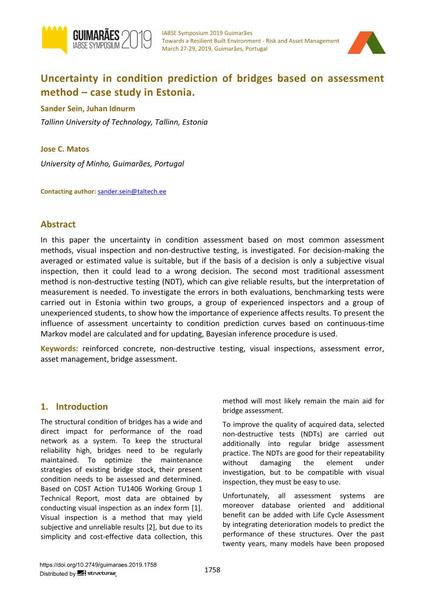Uncertainty in condition prediction of bridges based on assessment method – case study in Estonia

|
|
|||||||||||
Détails bibliographiques
| Auteur(s): |
Sander Sein
(Tallinn University of Technology, Tallinn, Estonia)
Juhan Idnurm (Tallinn University of Technology, Tallinn, Estonia) José C. Matos |
||||
|---|---|---|---|---|---|
| Médium: | papier de conférence | ||||
| Langue(s): | anglais | ||||
| Conférence: | IABSE Symposium: Towards a Resilient Built Environment Risk and Asset Management, Guimarães, Portugal, 27-29 March 2019 | ||||
| Publié dans: | IABSE Symposium Guimarães 2019 | ||||
|
|||||
| Page(s): | 1758-1765 | ||||
| Nombre total de pages (du PDF): | 8 | ||||
| DOI: | 10.2749/guimaraes.2019.1758 | ||||
| Abstrait: |
In this paper the uncertainty in condition assessment based on most common assessment methods, visual inspection and non-destructive testing, is investigated. For decision-making the averaged or estimated value is suitable, but if the basis of a decision is only a subjective visual inspection, then it could lead to a wrong decision. The second most traditional assessment method is non-destructive testing (NDT), which can give reliable results, but the interpretation of measurement is needed. To investigate the errors in both evaluations, benchmarking tests were carried out in Estonia within two groups, a group of experienced inspectors and a group of unexperienced students, to show how the importance of experience affects results. To present the influence of assessment uncertainty to condition prediction curves based on continuous-time Markov model are calculated and for updating, Bayesian inference procedure is used. |
||||
